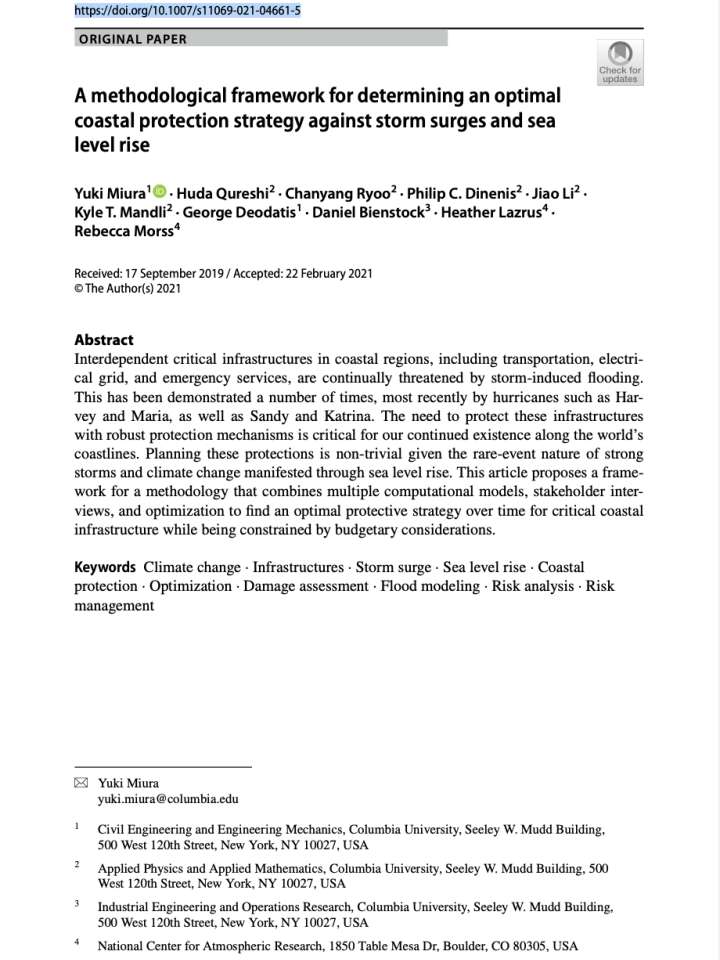A methodological framework for determining an optimal coastal protection strategy against storm surges and sea level rise
This article proposes a framework for a methodology that combines multiple computational models, stakeholder interviews, and optimization to find an optimal protective strategy over time for critical coastal infrastructure while being constrained by budgetary considerations. Interdependent critical infrastructures in coastal regions, including transportation, electrical grid, and emergency services, are continually threatened by storm-induced flooding. This has been demonstrated a number of times, most recently by hurricanes such as Harvey and Maria, as well as Sandy and Katrina. The need to protect these infrastructures with robust protection mechanisms is critical for our continued existence along the world’s coastlines. Planning these protections is non-trivial given the rare-event nature of strong storms and climate change manifested through sea level rise.
The paper presents the basic methodological framework to determine the “optimal” protective strategy over a prescribed multi-year period for coastal infrastructures subjected to storm surge-induced flooding and sea level rise. It should be noted that optimality, as defined in this paper, has certain limitations due to the uncertainties involved with future storm events and sea level rise. The resulting optimal protective strategy is constrained by budgetary considerations. The methodology combines multiple computational models, optimization techniques, and stakeholders’ feedback and empirical knowledge.
Explore further

